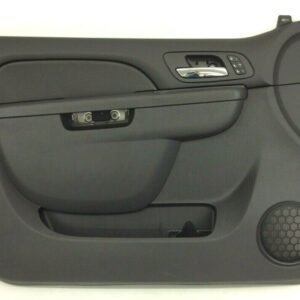Product Details
GM Genuine Parts Radiators are designed, engineered, and tested to rigorous standards, and are backed by General Motors. Radiators are heat exchangers, typically located in the front of the vehicle where air can flow through the fins and dissipate heat. Modern radiators are made from aluminum and plastic, while older vehicles used copper and brass. These radiators are designed to be corrosion resistant with optimal heat transfer characteristics. GM Genuine Parts are the true OE parts installed during the production of or validated by General Motors for GM vehicles. Some GM Genuine Parts may have formerly appeared as ACDelco GM Original Equipment (OE).
Warranty
Limited Lifetime Warranty for Parts (plus Labor if installed by a GM dealer)
Product Specifications
|
Classification |
OE |
|
Mounting Type |
Pin Bushing |
|
Core Height |
13.74 in |
|
Core Height |
349 mm |
|
Core Thickness |
1.1 in |
|
Core Thickness |
28 mm |
|
Core Width |
18.27 in |
|
Core Width |
464 mm |
|
Inlet Header Length |
17.99 in |
|
Inlet Header Length |
457 mm |
|
Outlet Header Length |
17.99 in |
|
Outlet Header Length |
457 mm |
|
Core Material |
Aluminum |
|
Outlet Location |
Bottom Center |
|
Tank Material |
Plastic |
|
Transmission Oil Cooler Included |
No |
|
Inlet Header Width |
4.25 in |
|
Inlet Header Width |
108 mm |
|
Outlet Header Width |
4.88 in |
|
Outlet Header Width |
124 mm |
|
Inlet Diameter |
1.34 in |
|
Inlet Diameter |
34 mm |
|
Inlet Location |
Top Left |
|
Outlet Diameter |
1.18 in |
|
Outlet Diameter |
30 mm |
|
Frame Included |
No |
|
Engine Oil Cooler Included |
No |
|
Down Flow Or Cross Flow Type |
Down Flow |
|
Internal Engine Oil Cooler |
No |
|
Internal Transmission Oil Cooler |
No |
|
Radiator Cap Included |
No |
Maintenance
Maintain proper coolant levels and check levels regularly. Also make sure to check coolants concentration because the water ratio can affect the freezing or boiling point. (Note: Never attempt to remove a surge or radiator cap while the engine is hot. Serious injury could result.)
-
Replace coolant with a mixture of antifreeze and water according to the owner’s manual recommendations.
-
Evaluate radiator and radiator cap for leaks, corrosion, or worn cap gasket. Make sure to pressure test the cap.
-
Periodically, remove bugs, leaves, and other debris from the front of the radiator. They can block airflow and substantially reduce cooling efficiency.
Frequently Asked Questions
Q: My engine is overheating does this mean I need to replace my radiator?
A: No, an overheating engine could mean an issue with your radiator, but there are other pieces of the cooling system that could cause the engine to overheat. It is important to check for coolant leaks or a malfunctioning fan. If you look at the radiator and there is a lot of corrosion or holes there may be a problem with the radiator. Either way it is important to get the whole cooling system checked when your engine overheats.






Reviews
There are no reviews yet.